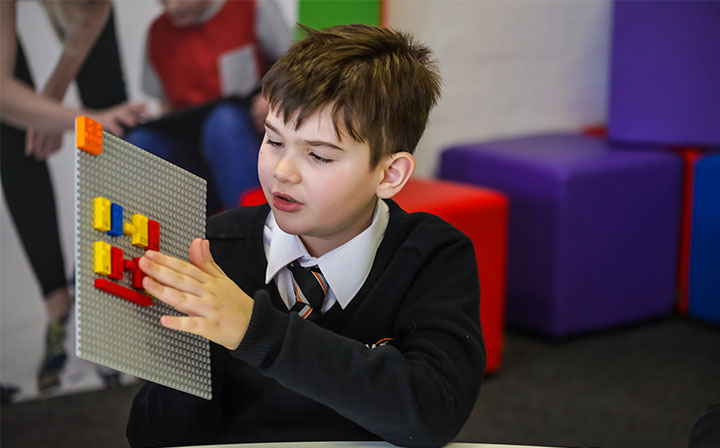Lego Introduces Braille Bricks

By Taylor Smith
Lego, the classic children’s brick-building company, has announced the release of customized bricks designed to help children who are blind or visually impaired to learn to read Braille.
Each braille block will feature studs with the identical six-dot configuration of individual letters and numbers from the Braille alphabet. Lego has been collaborating with two nonprofits for the visually impaired to design the bricks. The Danish Association of the Blind first approached Lego in 2011 with a suggestion to create Braille bricks. The idea was pushed forward again in 2017 by the Dorina Nowill Foundation for the Blind. The advocates for the new toy cite the fact that Braille literacy is in decline among Americans (even among those who are visually impaired). The Lego Foundation believes that the Braille Lego bricks will encourage parents and teachers to incorporate Braille as an effective and fun, tactile way to learn the alphabet.
In the age of digital-everything and the audio book, the popularity of Braille has diminished. By contrast, the National Federation of the Blind estimates that in the 1950s, half of all blind children learned to read Braille, and teaching Braille was part of every curriculum at schools for the blind.
In 2019, children who are blind or visually impaired find it easier to put on headphones to listen to an audio book, which is understandable considering how many of their peers are constantly plugged into their iPhones, as well.
However, many English teachers are quick to point out that audio books do not showcase vital components of language learning and literacy, such as spelling, grammar, punctuation, paragraphs, etc.
Lego’s Braille bricks are expected to hit stores in 2020. The company hopes that the new toys will encourage non-visually impaired students to want to learn Braille as well, thus bridging a social and intellectual gap between the two student populations.

